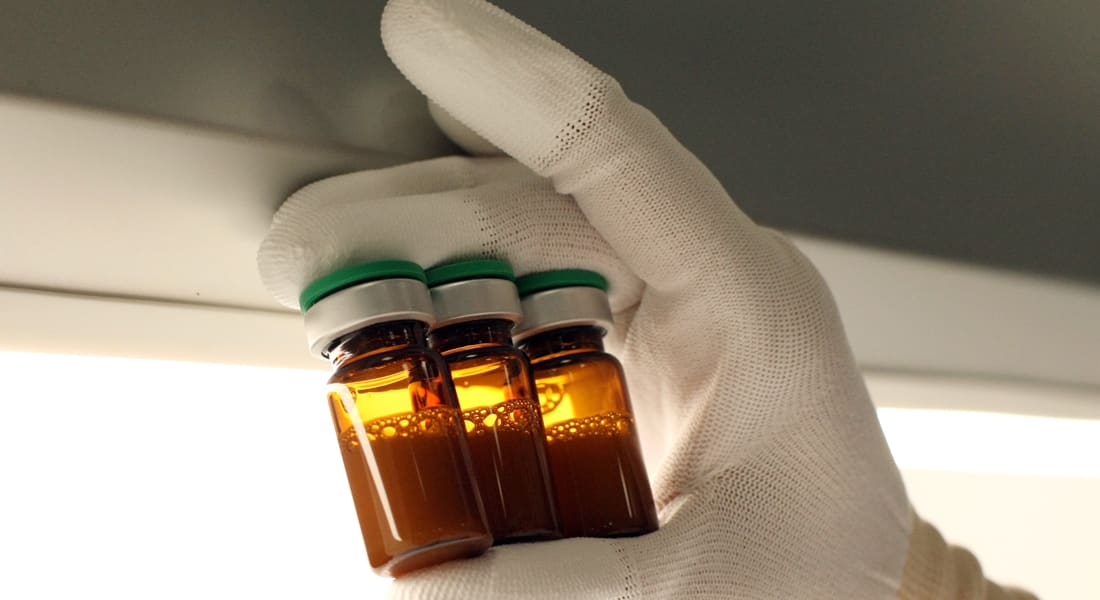دبي، الإمارات العربية المتحدة (CNN) -- انتشر مؤخراً الحديث عن ظهور بعض حالات الإصابة بمرض الحصبة في الولايات المتحدة الأمريكية، ما أدى إلى حالة من الهلع في الشارع الأمريكي، والعودة إلى التفكير بالمعتقدات الخاطئة حول اللقاحات.
ورغم من أهمية هذه اللقاحات، إلا أنّ هناك بعض المعتقدات الخاطئة التي تتسبب في مخاوف شديدة لدى الأهل. وفيما يلي خمسة معتقدات خاطئة حول اللقاحات.
- اللقاح يؤدي للإصابة بمرض التوحد.
ويُذكر، أنّ هذا الاعتقاد الخاطئ انبثق من دراسة غير معترف بها حالياً، نشرت في العام 1998، في مجلة "لانسيت" الطبية البريطانية في العام 1998، إذ ربط الدكتور أندرو ويكفيليد مرض التوحد بلقاحات الأطفال.
ورغم أن الباحثين دحضوا نتائج الدراسة، إلا أنّها اثارت الذعر بين الأهل، وأدّت إلى انخفاض حاد في معدل الأطفال الحاصلين على اللقاحات في بريطانيا والولايات المتحدة الأمريكية.
وأزالت مجلة "لانسيت" بحث ويكفيليد من صفحاتها في العام 2010، وسُحبت منه رخصة مزاولة مهنة الطب.
- اللقاح يحتوي على مواد سامة.
ويعتقد بعض الأشخاص أنّ احتواء اللقاح على عنصر الزئبق يتسبب في تسمم الأطفال، والإصابة بمرض التوحد. وفي فترة الثلاثينيات، استخدمت الشركات المنتجة للقاحات مادة حافظة تسمى الثيمورسال، وتحتوي على تركيز منخفض جداً من مركب الزئبق.
ولكن، في العام 2001، امتنعت إدارة مراقبة الغذاء والدواء عن إصدار تراخيص اللقاحات التي تحتوي على مادة الثيمروسال.
وأشارت إدارة مراقبة الغذاء والدواء، إلى أنّ مادة الثيومرسال الحافظة تستخدم في لقاحات الأشخاص البالغين منذ سنوات طويلة، ولم تكشف أي دراسات عن وجود علاقة بين مرض التوحد واللقاح، وأي آثار جانبية أخرى.
ويُذكر، أنّ حالات الإصابة بمرض التوحد لم تنخفض منذ أن بدأ حظر استخدام مادة الثيمروسال الحافظة في اللقاحات، ما يؤكد على عدم وجود علاقة بين اللقاحات من جهة والمرض من جهة أخرى.
- تصنيع اللقاح يحقق أرباحاً مادياً.
ويعتبر بعض الأشخاص أن شركات التأمين والأطباء يقومون بتسويق اللقاحات، بهدف تحقيق أرباح مادية.
ولكن، تقوم شركات التأمين بدفع كلفة اللقاحات، حتى لا تضطر إلى دفع تكاليف مالية أكبر لدى تعرّض الشخص للإصابة بالأمراض.
ووجدت دراسة نشرت في العام 2009، أنّ حوالي ثلث عدد الأطباء يخسرون مبالغ مالية كبيرة لدى تقديم اللقاحات للمرضى.
- كثرة المضادات الحيوية في اللقاح.
ويشعر بعض الأهل بالخوف من تلقيح أبنائهم، بسبب احتواء اللقاح على كميات كبيرة من المضادات الحيوية، التي تجعل من الجسم أكثر مقاومة للأمراض. ولكن، يُذكر أنّ الناس اعتادت على الحصول على حوالي 3 آلاف من المضادات الحيوية في فترة الثمانينيات، مقارنة بـ 150 فقط في يومنا الحالي.
- الأمراض غير قابلة للانقراض.
ويسود الاعتقاد أنّه لم يعد هناك أهمية لتلقيح الأطفال، وخصوصاً أن بعض الأمراض تم القضاء عليها.
وسجلّت الولايات المتحدة الأمريكية في العام 2014 تفشي 644 حالة إصابة بالحصبة. وأوضح تقرير صادر عن منظمة الصحة العالمية، أنّ الحصبة ما تزال مسبباً رئيسياً في وفيات الأطفال حول العالم.
وتجدر الإشارة، إلى أنّ حملات التلقيح ضد الحصبة ساهمت في خفض معدلات العدوى والإصابة بين السكان بنسبة 99 في المائة، مقارنة بالفترة التي لم يتوفر فيها اللقاح.

